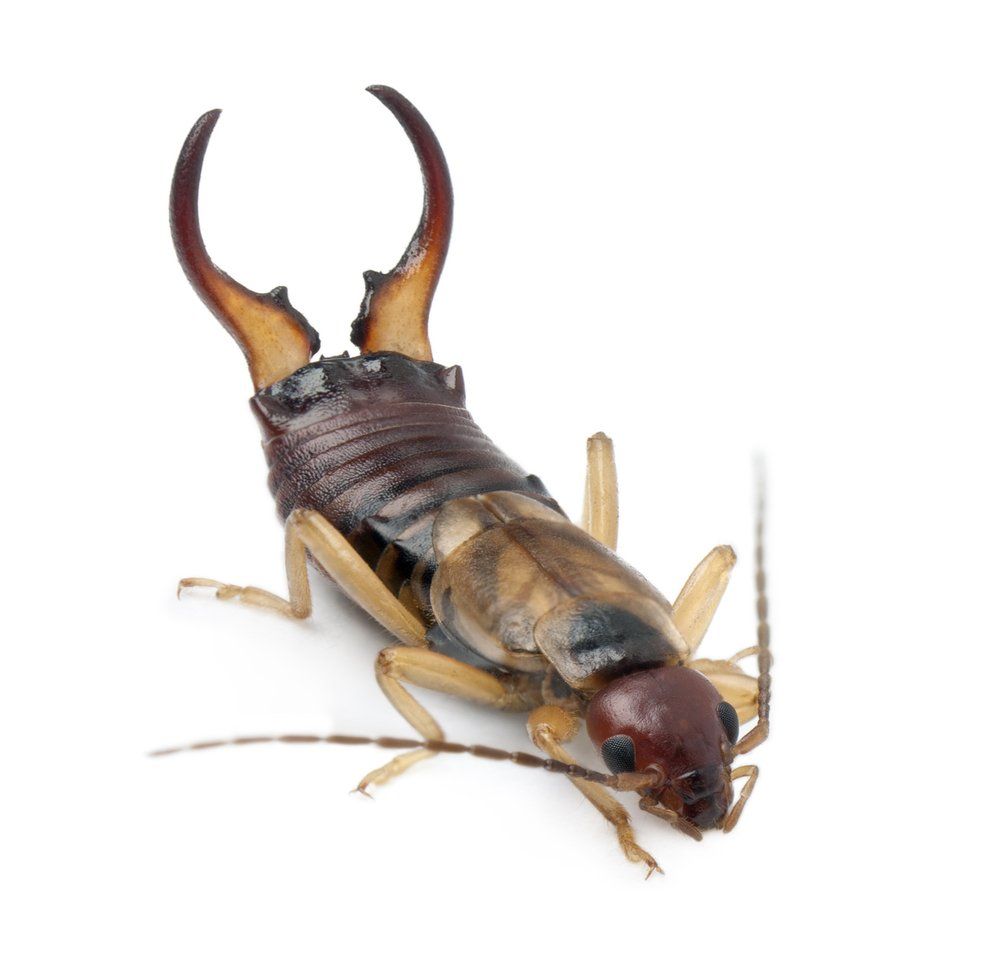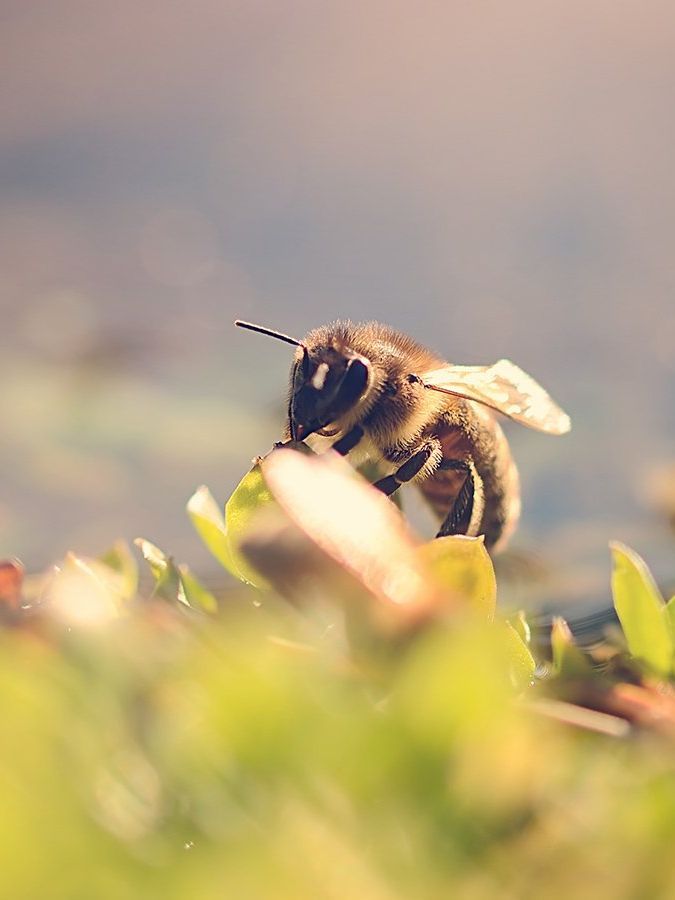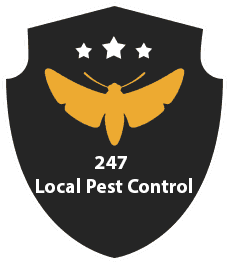Understanding Earwigs
Earwigs are small insects belonging to the order Dermaptera. They are characterized by their elongated bodies, flattened profiles, and distinctive pincer-like appendages at the tip of their abdomen, known as cerci. These insects are nocturnal and primarily feed on various organic matter, including plants, insects, and decaying material.
- Earwigs typically measure between 0.5 to 1 inch in length, though some species may be larger or smaller.
- They have slender, reddish-brown bodies with prominent pincers, or cerci, at the rear end.
- Earwigs also have a pair of membranous wings folded beneath short, leathery forewings, although they are not strong fliers and are more commonly found crawling or hiding in damp, dark areas.
- Despite their intimidating appearance, earwigs are not aggressive towards humans and are unlikely to sting or bite unless provoked.
- They are primarily nocturnal creatures, preferring to remain hidden during the day and becoming active at night to forage for food.
- Earwigs are attracted to moisture and are commonly found in damp, dark environments such as gardens, flower beds, mulch piles, and underneath rocks or debris.
- Earwigs are versatile insects that can adapt to a wide range of habitats, although they are commonly associated with outdoor environments with ample moisture and organic matter.
- They often seek shelter in cool, moist areas such as under stones, logs, flower pots, and in crevices or cracks in walls and foundations.
- While earwigs are predominantly outdoor pests, they may occasionally venture indoors in search of food, shelter, or moisture, particularly during periods of extreme weather conditions.
Understanding the appearance, behavior, and habitats of earwigs is essential for effective pest control and management. If you're experiencing issues with earwigs on your property, professional pest control services can help identify and address the underlying factors contributing to the infestation, ensuring a pest-free environment for you and your family.


Risks of Earwig Infestation
Without proper earwig pest control, these insects can cause significant damage to plants and gardens.
Damage to Plants and Garden Crops:
Earwigs are omnivorous insects that feed on a wide variety of plants, including vegetables, fruits, flowers, and ornamentals. They often target tender foliage and young shoots, causing significant damage to garden crops and ornamental plants.
Common signs of earwig feeding include chewed or shredded leaves, flowers, and fruits, as well as irregular holes or notches along the edges of foliage. Severe infestations can lead to stunted growth, reduced yield, and even complete loss of plants.
Indoor Damage:
While earwigs are primarily outdoor pests, they may occasionally find their way indoors in search of shelter, moisture, or food. Once indoors, they can cause damage to household items such as fabric, paper, cardboard, and stored food items.
Earwigs may chew on clothing, curtains, books, and other household items, leading to unsightly damage and potential loss of property.
Health Concerns:
While earwigs are not known to transmit diseases to humans, their presence in large numbers can be a nuisance and cause anxiety for some individuals.
In rare cases, earwig pinchers may cause minor skin irritation or allergic reactions in sensitive individuals who come into direct contact with the insects. However, such instances are infrequent and typically only occur when handling or disturbing earwigs.
Garden Aesthetic Damage:
In addition to feeding on plants, earwigs can cause aesthetic damage by leaving behind chewed leaves, flowers, and fruits. This can detract from the overall appearance of gardens, landscapes, and ornamental plantings, reducing their aesthetic value.
Unsightly damage caused by earwigs may also affect the enjoyment and usability of outdoor spaces, particularly in residential gardens, parks, and recreational areas.
Increased Pest Pressure:
Earwigs serve as prey for many other garden pests and predators, including birds, toads, and predatory insects. An abundance of earwigs in the garden can attract these natural predators, potentially leading to imbalances in the local ecosystem and increased pest pressure on other plants and crops.
Addressing an earwig infestation promptly is crucial to mitigate these risks and protect your plants, crops, and property. Professional pest control services can help identify the extent of the infestation, implement targeted treatments, and provide guidance on preventative measures to minimize the impact of earwigs on your home and garden.
Prevention Tips for Earwig Control
Effective earwig pest control begins with sealing entry points and addressing moisture issues.
Seal Entry Points:
Inspect the exterior of your home for any cracks, gaps, or openings that could serve as entry points for earwigs. Seal these entry points with caulk or weatherstripping to prevent pests from gaining access to your home.
Reduce Moisture Levels:
Earwigs are attracted to moisture, so it's essential to address any sources of excess moisture around your property. Fix leaky faucets, pipes, and gutters, and ensure proper drainage away from your home's foundation to reduce humidity levels.
Improve Ventilation:
Ensure adequate ventilation in damp areas such as basements, crawl spaces, and bathrooms to reduce humidity and moisture buildup. Use exhaust fans or dehumidifiers as needed to maintain optimal moisture levels indoors.
Remove Outdoor Debris:
Keep your outdoor environment tidy by removing clutter, debris, and organic matter from your yard and garden. Piles of leaves, mulch, and decaying plant material can provide hiding places and breeding grounds for earwigs.
By following these prevention tips and maintaining a clean, well-maintained outdoor environment, you can reduce the likelihood of earwig infestations and protect your home and garden from these pesky pests. If you require further assistance, professional pest control services can provide tailored solutions to address your specific needs and ensure long-term pest prevention.


Common Signs of Earwig Infestation
Recognizing the signs of an earwig infestation early allows for prompt implementation of effective earwig pest control methods, minimizing potential damage.
Sightings of Earwigs:
The presence of earwigs indoors or outdoors is one of the most obvious signs of an infestation. You may observe these insects crawling on surfaces, particularly in damp or dark areas such as basements, bathrooms, kitchens, or outdoor garden beds.
Damage to Plants:
Earwigs are voracious feeders and can cause damage to a variety of plants, including vegetables, fruits, flowers, and ornamentals. Look for chewed or damaged leaves, flowers, and fruits, as well as irregular holes or notches along the edges of foliage.
Sheltering Behavior:
Earwigs are nocturnal creatures that prefer to hide during the day and become active at night. Check for evidence of earwigs sheltering in damp, dark areas such as under rocks, logs, mulch, garden debris, or in cracks and crevices around the exterior of your home.
Moisture Preference:
Earwigs are attracted to moisture and are commonly found in areas with high humidity levels or excess moisture, such as basements, crawl spaces, bathrooms, and around leaky faucets or pipes.
Damage to Outdoor Structures:
In addition to feeding on plants, earwigs may also cause damage to outdoor structures such as wooden furniture, fences, and siding. Look for signs of chewing or gnawing, particularly in areas with high earwig activity.
Presence of Eggs or Nymphs:
If you discover earwig eggs or nymphs (young earwigs) in and around your property, it may indicate a breeding population nearby. Earwig eggs are small and oval-shaped, while nymphs resemble adult earwigs but are smaller and lack fully developed wings.
Unpleasant Odor:
In some cases, earwig infestations may be accompanied by an unpleasant odor, particularly if the insects are congregating in large numbers or if they have been disturbed.
If you notice any of these signs of an earwig infestation on your property, it's essential to take action promptly to prevent further damage and address the underlying problem. Professional pest control services can help identify the extent of the infestation, implement targeted treatments, and provide guidance on preventative measures to minimize the impact of earwigs on your home and garden.
Safety Measures
At 24/7 Local Pest Control, our top priority is the safety of our clients, their families, and pets. We take rigorous precautions to ensure a safe and secure environment throughout the pest control process.
1. Certified Technicians:
- Our team consists of highly trained and certified technicians who are experts in pest control procedures and safety protocols.
- They undergo regular training to stay updated on the latest industry standards and best practices for safe pest management.
2. Protective Gear:
- Our technicians wear appropriate personal protective equipment (PPE), including gloves, masks, and safety goggles, to minimize exposure to pesticides and potential hazards.
- This gear not only safeguards our team members but also prevents any accidental contact with clients, their family members, or pets.
3. Pet-Friendly Treatments:
- We understand the importance of pets in our clients' lives, which is why we use pet-friendly pest control products whenever possible.
- Our treatments are carefully selected and applied to ensure the safety and well-being of furry family members.
4. Child-Safe Practices:
- We take special care to use child-safe pest control methods, particularly in households with young children.
- Our technicians follow strict guidelines to prevent accidental ingestion or exposure to pesticides, keeping your little ones safe.
5. Environmentally Conscious Approach:
- In addition to prioritizing human and pet safety, we are committed to environmental stewardship.
- We use eco-friendly pest control products and practices that minimize environmental impact while effectively managing pest populations.
- Our treatments target pests specifically, minimizing harm to beneficial insects, wildlife, and the surrounding ecosystem.
If you're experiencing issues with earwigs on your property, professional pest control services can help identify and address the underlying factors contributing to the infestation, ensuring a pest-free environment for you and your family. Don't let earwigs take over your property—take action today to protect your space from these pests. Don't let earwigs take over your home or garden. Contact 24/7 Local Pest Control today for safe and effective earwig pest control solutions!


